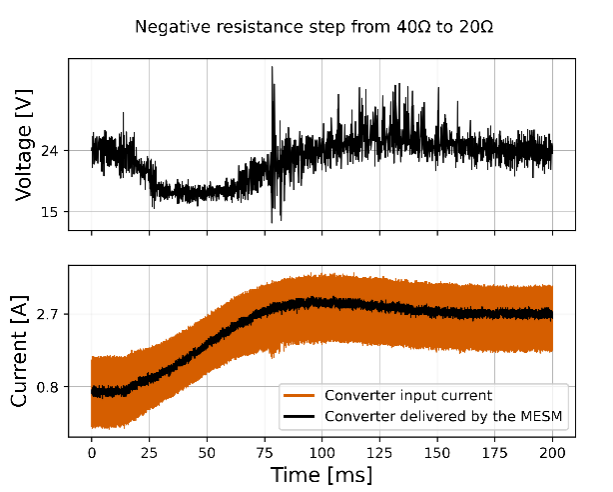Analysis and assessment of hybrid topologies for energy storage systems oriented for electric vehicles: An experimental case study on supercapacitors and a high energy density device
DOI:
https://doi.org/10.18686/cest314Keywords:
hybrid energy storage systems; supercapacitors; lithium batteries; hybrid storage systems; renewable energiesAbstract
Hybrid energy storage systems consist of two or more types of energy storage technologies, usually including batteries and supercapacitors. The complementary characteristics of these hybrid systems make them outperform any individual energy storage device, depending on the energy requirements of the application in different scenarios or under certain conditions. This work introduces a variety of different energy storage systems, while later on different topologies composed of supercapacitors and an energy-dense device are experimentally analyzed to solve their contrasting limitations. Additionally, a control strategy is implemented in each topology to regulate energy distribution, enhancing system performance under varying load conditions. Finally, the results are presented and discussed, validating the effectiveness of the proposed hybrid topologies in mitigating the limitations of individual energy storage devices.

Downloads
Published
How to Cite
Issue
Section
License
Copyright (c) 2025 Author(s)

This work is licensed under a Creative Commons Attribution 4.0 International License.
References
1. Ritchie H, Roser M. Energy. Our World in Data; 2020.
2. Miller MA, Holmes AG, Conlon BM, Savagian PJ. The GM ‘Voltec’ 4ET50 Multi-Mode Electric Transaxle. Modeling, Dynamics and Control of Electrified Vehicles. 2011; 1102–1114. doi: 10.4271/2011-01-0887 DOI: https://doi.org/10.4271/2011-01-0887
3. Horie H. 5-EVs and HEVs: The Need and Potential Functions of Batteries for Future Systems. In: Pistoia G (editor). Lithium-Ion Batteries. Elsevier; 2014. pp. 83–95. DOI: https://doi.org/10.1016/B978-0-444-59513-3.00005-4
4. Vetter M, Rohr L. 13-Lithium-Ion Batteries for Storage of Renewable Energies and Electric Grid Backup. In: Pistoia G (editor). Lithium-Ion Batteries. Elsevier; 2014. pp. 293–309. DOI: https://doi.org/10.1016/B978-0-444-59513-3.00013-3
5. Zhang S, Xiong R. HESS and Its Application in Series Hybrid Electric Vehicles. In: Zhang H, Cao D, Du H (editors). Modeling, Dynamics and Control of Electrified Vehicles. Woodhead Publishing; 2018. pp. 77–119. DOI: https://doi.org/10.1016/B978-0-12-812786-5.00003-3
6. Ghazanfari A, Hamzeh M, Mokhtari H, Karimi H. Active power management of Multihybrid Fuel Cell/supercapacitor power conversion system in a medium voltage microgrid. IEEE Transactions on Smart Grid. 2012; 3(4): 1903–1910, 2012, doi: 10.1109/tsg.2012.2194169 DOI: https://doi.org/10.1109/TSG.2012.2194169
7. Hannan MA, Hoque MM, Mohamed A, Ayob A. Review of energy storage systems for electric vehicle applications: Issues and challenges. Renewable and Sustainable Energy Reviews. 2017; (69): 771–789. doi: 10.1016/j.rser.2016.11.171 DOI: https://doi.org/10.1016/j.rser.2016.11.171
8. Arani AK, Karami H, Gharehpetian GB, Hejazi MSA. Review of Flywheel Energy Storage Systems structures and applications in power systems and microgrids. Renewable and Sustainable Energy Reviews. 2017; 69: 9–18, 2017. doi: 10.1016/j.rser.2016.11.166 DOI: https://doi.org/10.1016/j.rser.2016.11.166
9. Balali Y, Stegen S. Review of energy storage systems for vehicles based on technology, environmental impacts, and costs. Renewable and Sustainable Energy Reviews. 2021; 135: 110185. doi: 10.1016/j.rser.2020.110185 DOI: https://doi.org/10.1016/j.rser.2020.110185
10. Fornaro PO, Battaioto PE, Puleston P. On-line parameter estimation of a Lithium-Ion battery/Supercapacitor storage system using Filtering Sliding Mode Differentiators. Journal of Energy Storage. 2020; 32(27): 101889. DOI: https://doi.org/10.1016/j.est.2020.101889
11. Qasem NAA, Abdulrahman GAQ. A Recent Comprehensive Review of Fuel Cells: History, Types, and Applications. International Journal of Energy Research. 2024. doi: 10.1155/2024/7271748 DOI: https://doi.org/10.1155/2024/7271748
12. Wanison R, Syahputra WNH, Kammuang-lue N, et al. Engineering aspects of sodium-ion battery: An alternative energy device for Lithium-ion batteries. Journal of Energy Storage. 2024; 100: 113497. doi: 10.1016/j.est.2024.113497 DOI: https://doi.org/10.1016/j.est.2024.113497
13. Zhao L, Zhang T, Li W, et al. Engineering of Sodium-Ion Batteries: Opportunities and Challenges. Engineering. 2023; 24: 172–183. doi: 10.1016/j.eng.2021.08.032 DOI: https://doi.org/10.1016/j.eng.2021.08.032
14. Miller JM, McCleer PJ, Everett M, Strangas EG. Ultracapacitor Plus Battery Energy Storage System Sizing Methodology for HEV Power Split Electronic CVT’s. In: Proceedings of the IEEE International Symposium on Industrial Electronics; 20–23 June 2005; Dubrovnik, Croatia. pp. 317–324. DOI: https://doi.org/10.1109/ISIE.2005.1528930
15. Mesbahi T, Rizoug N, Bartholomeüs P, Le Moigne P. A new energy management strategy of a Battery/Supercapacitor Hybrid Energy Storage System for electric vehicular applications. In: Proceedings of the 7th IET International Conference on Power Electronics, Machines and Drives (PEMD 2014); 8–10 April 2014; Manchester, UK. pp. 1–7. DOI: https://doi.org/10.1049/cp.2014.0442
16. Riva A. Design and implementation of a security module for a supercapacitor bank based on FPGA (Spanish). Facultad de Ingeniería, Universidad Nacional de La Plata; 2017.
17. Sun J, Mitchell DM, Greuel MF, et al. Averaged modeling of PWM converters operating in discontinuous conduction mode. IEEE Transactions on Power Electronics. 2001; 16(4): 482–492. doi: 10.1109/63.931052 DOI: https://doi.org/10.1109/63.931052




.jpg)
.jpg)

